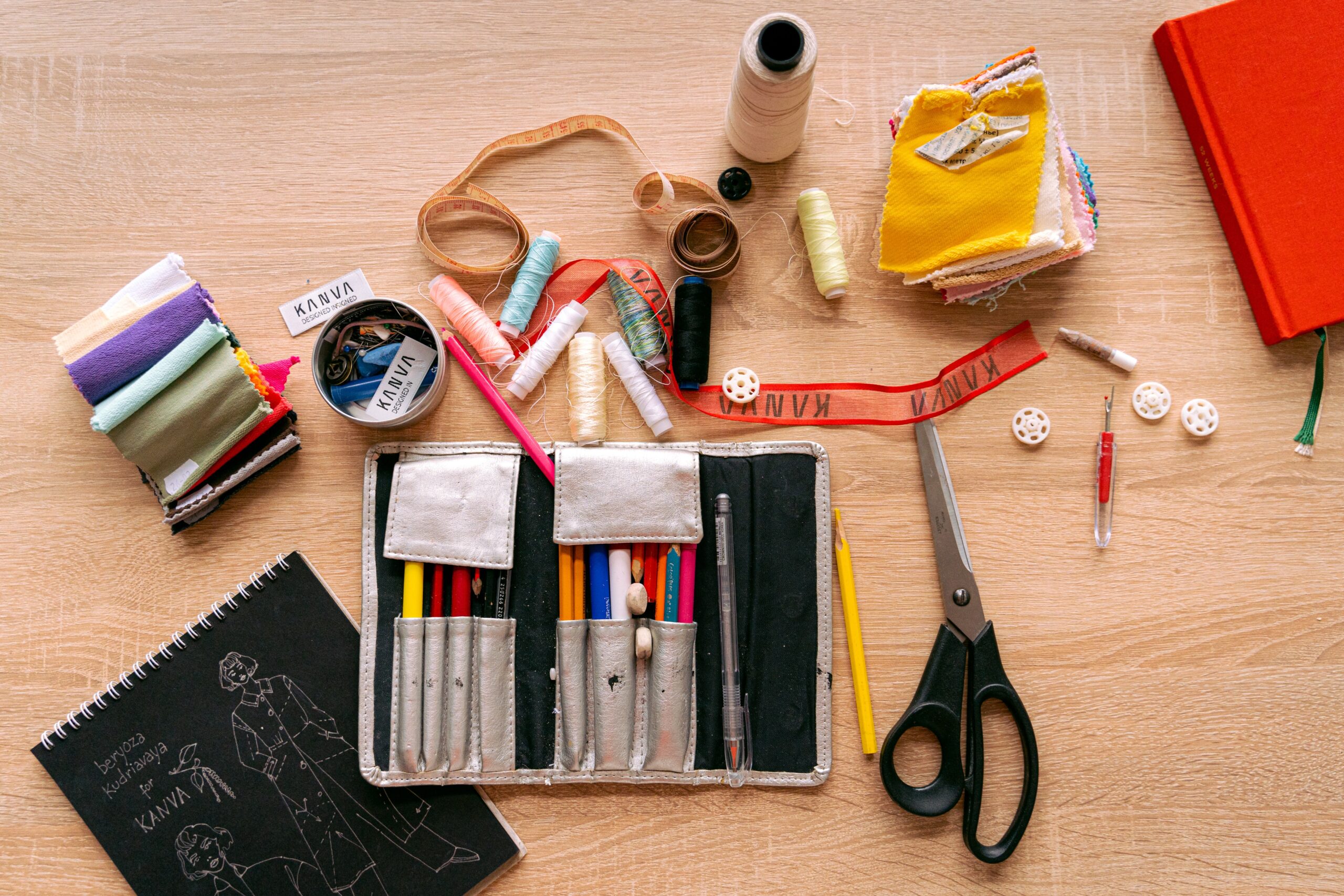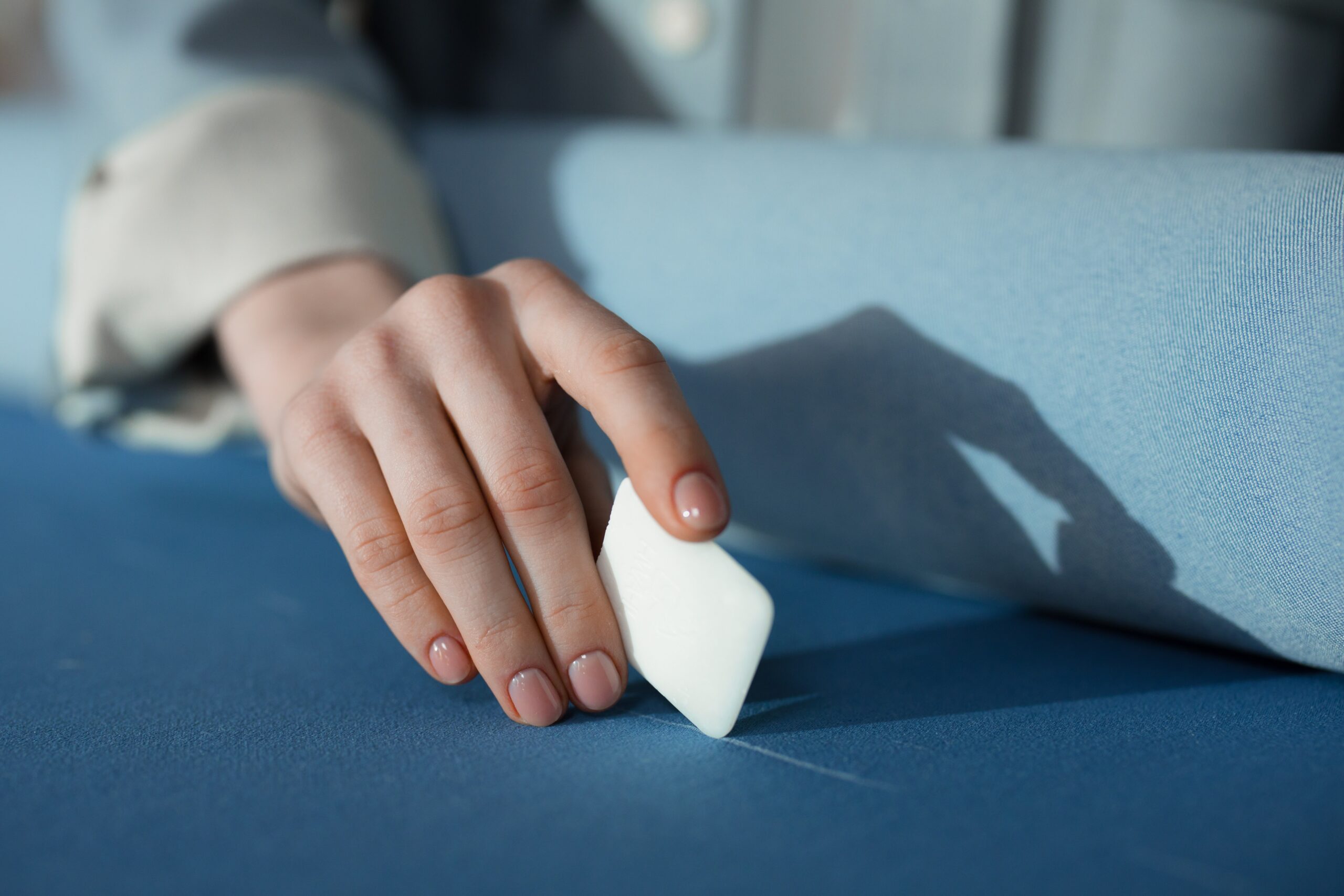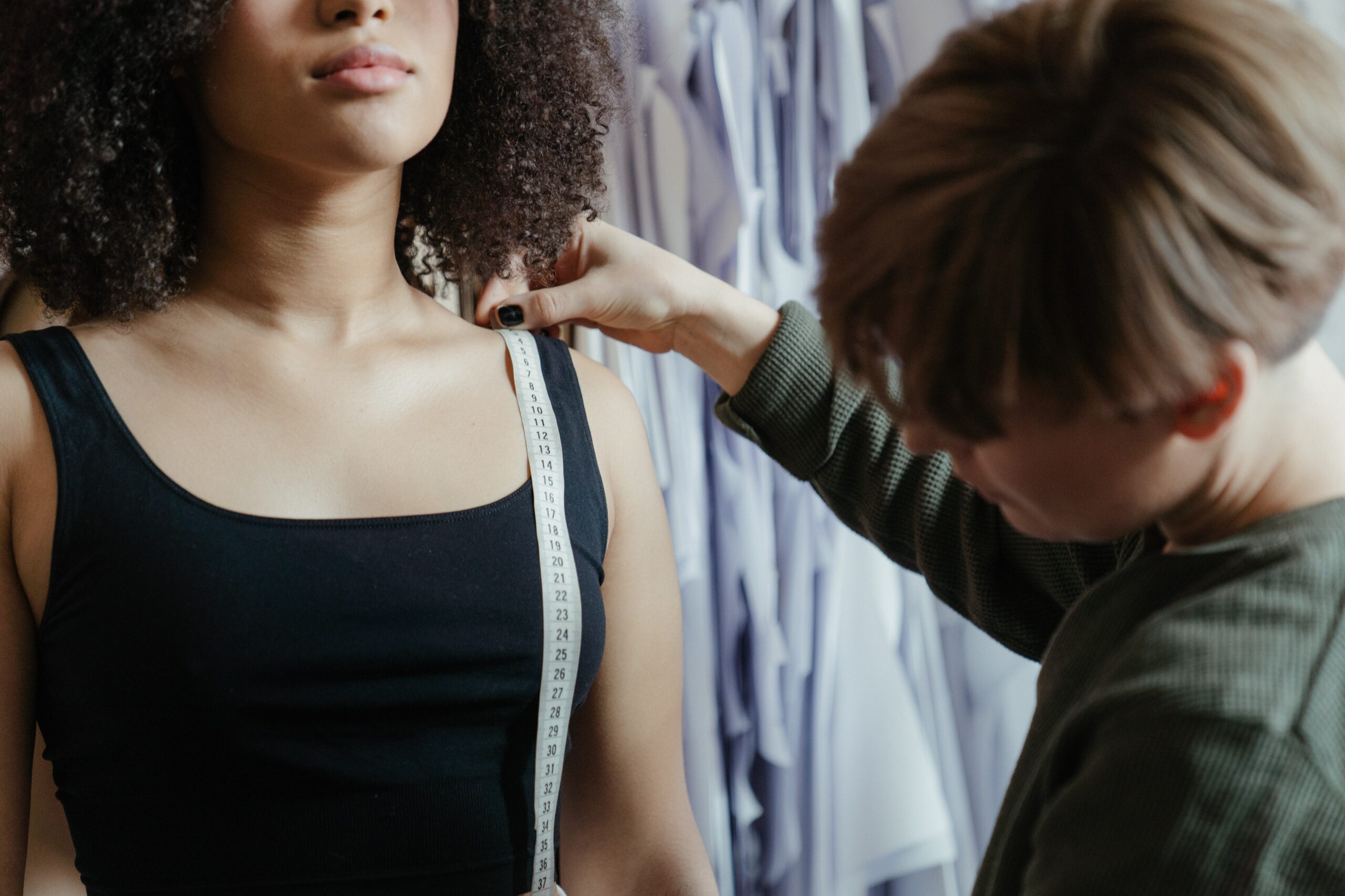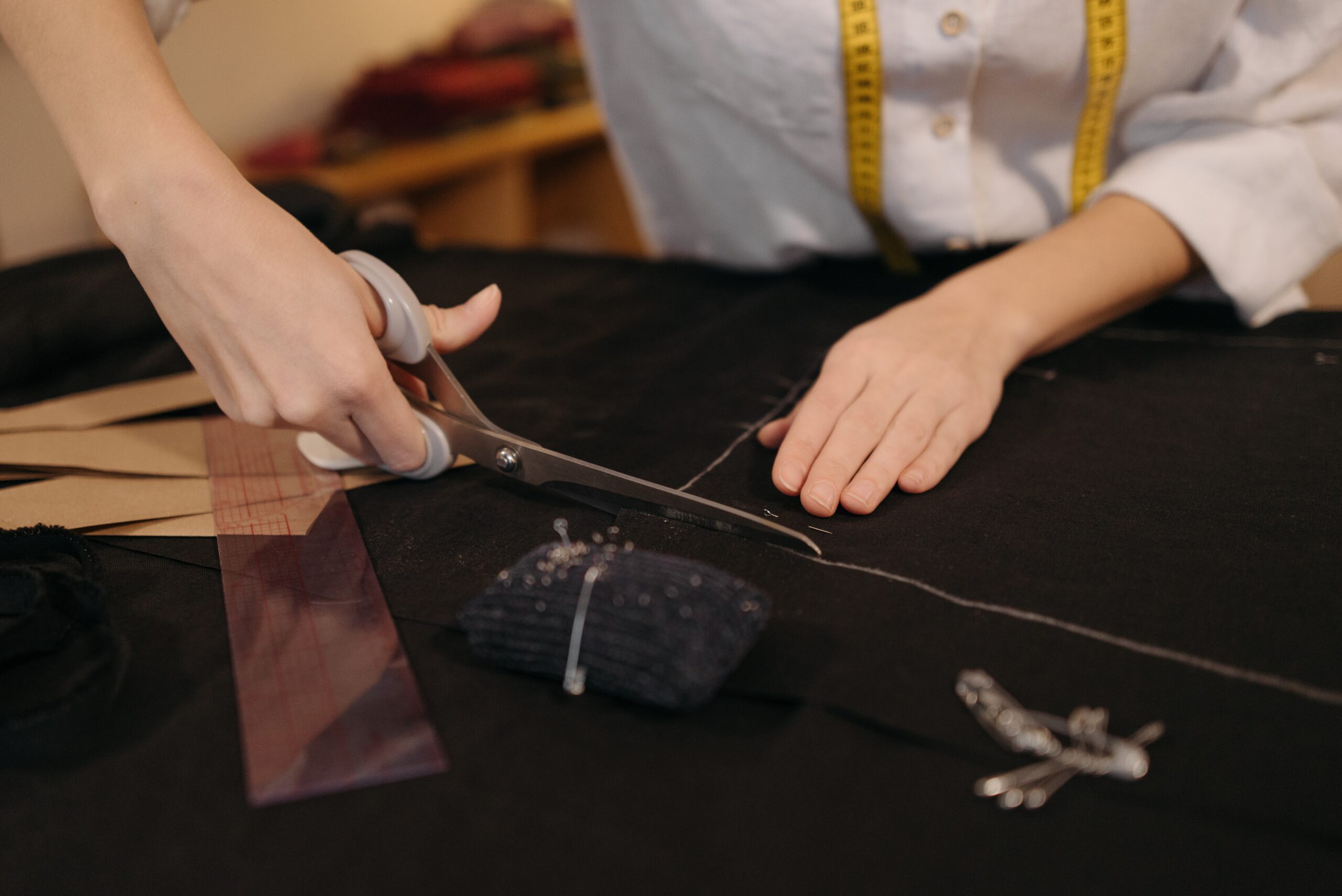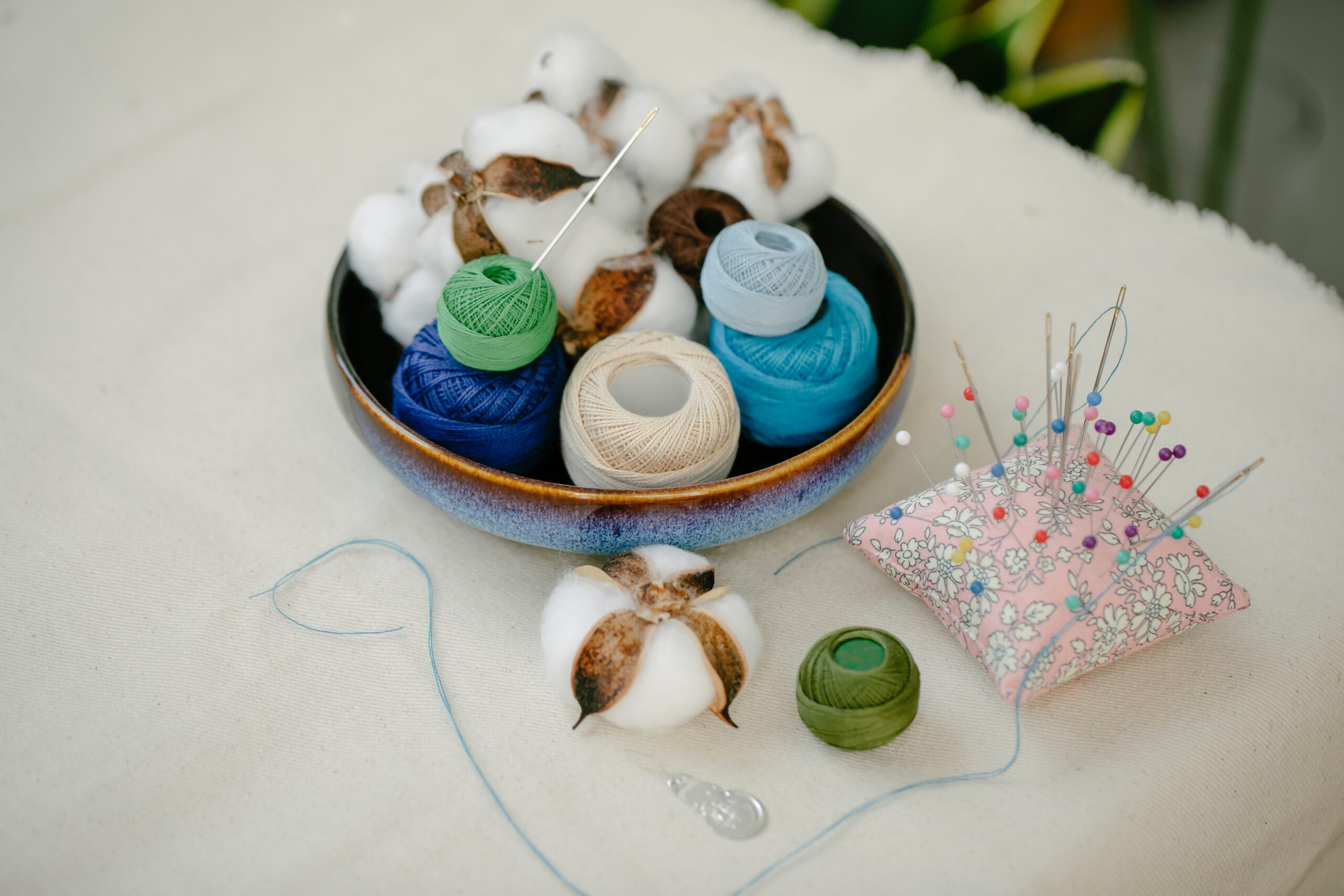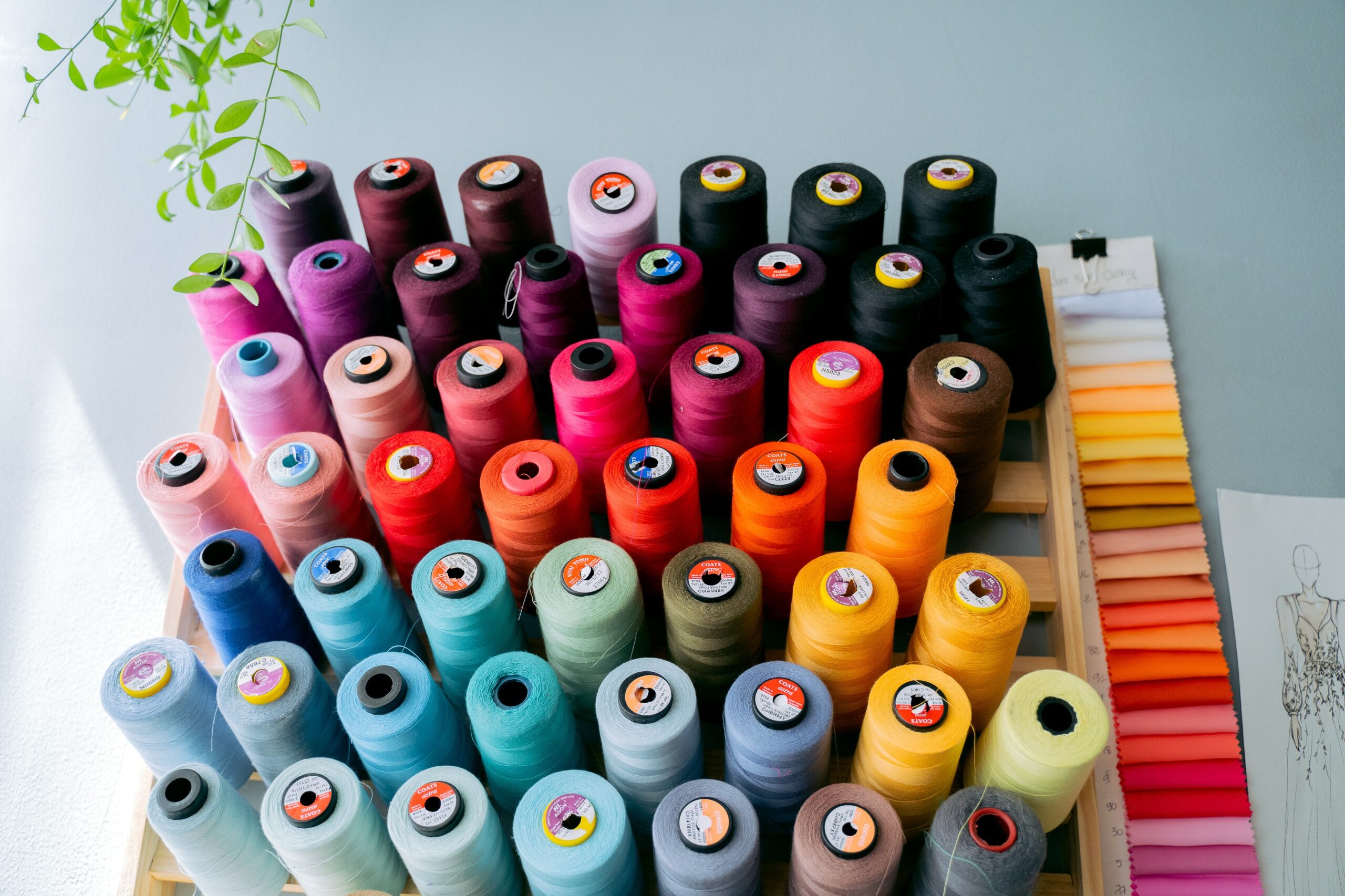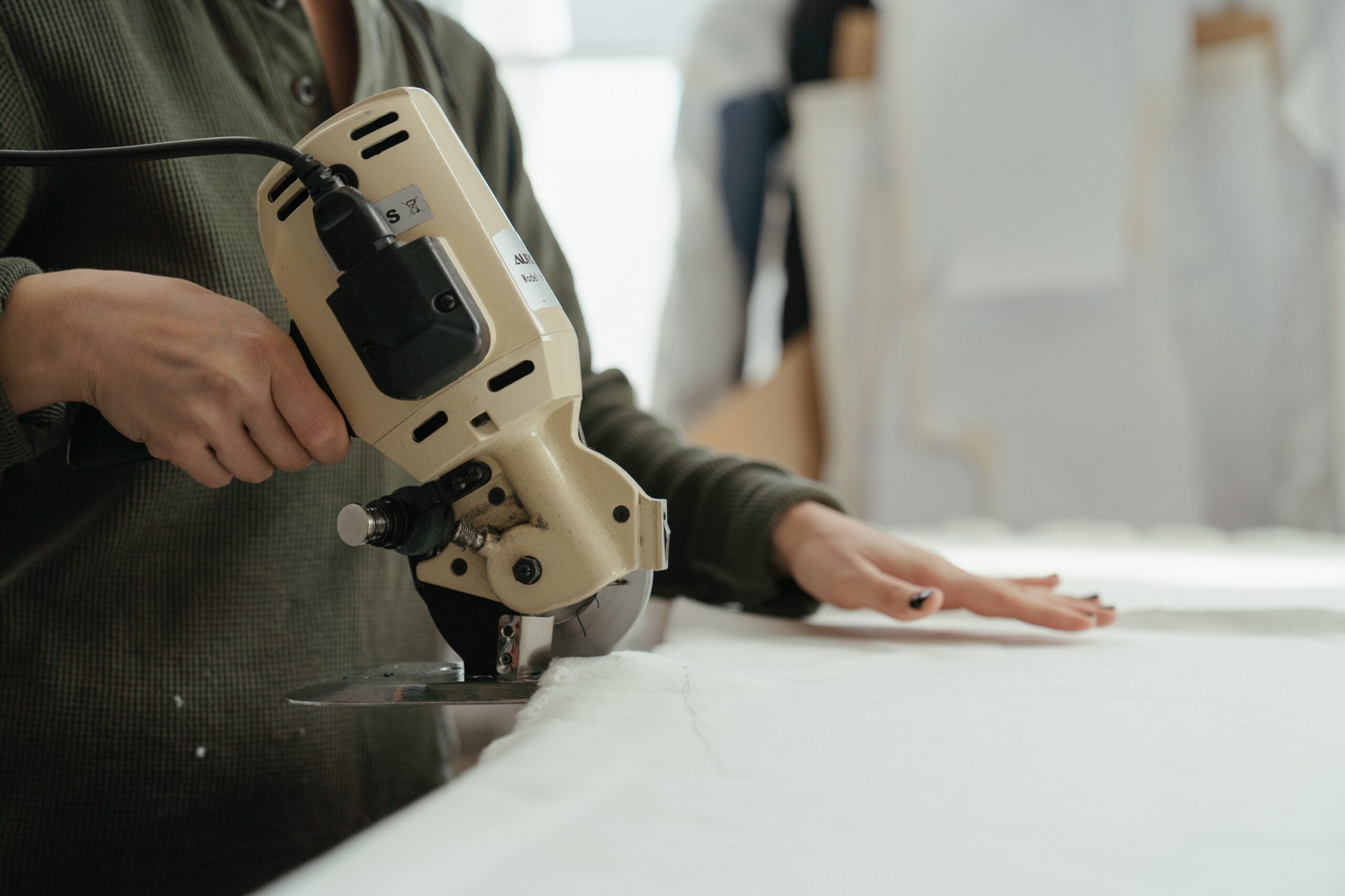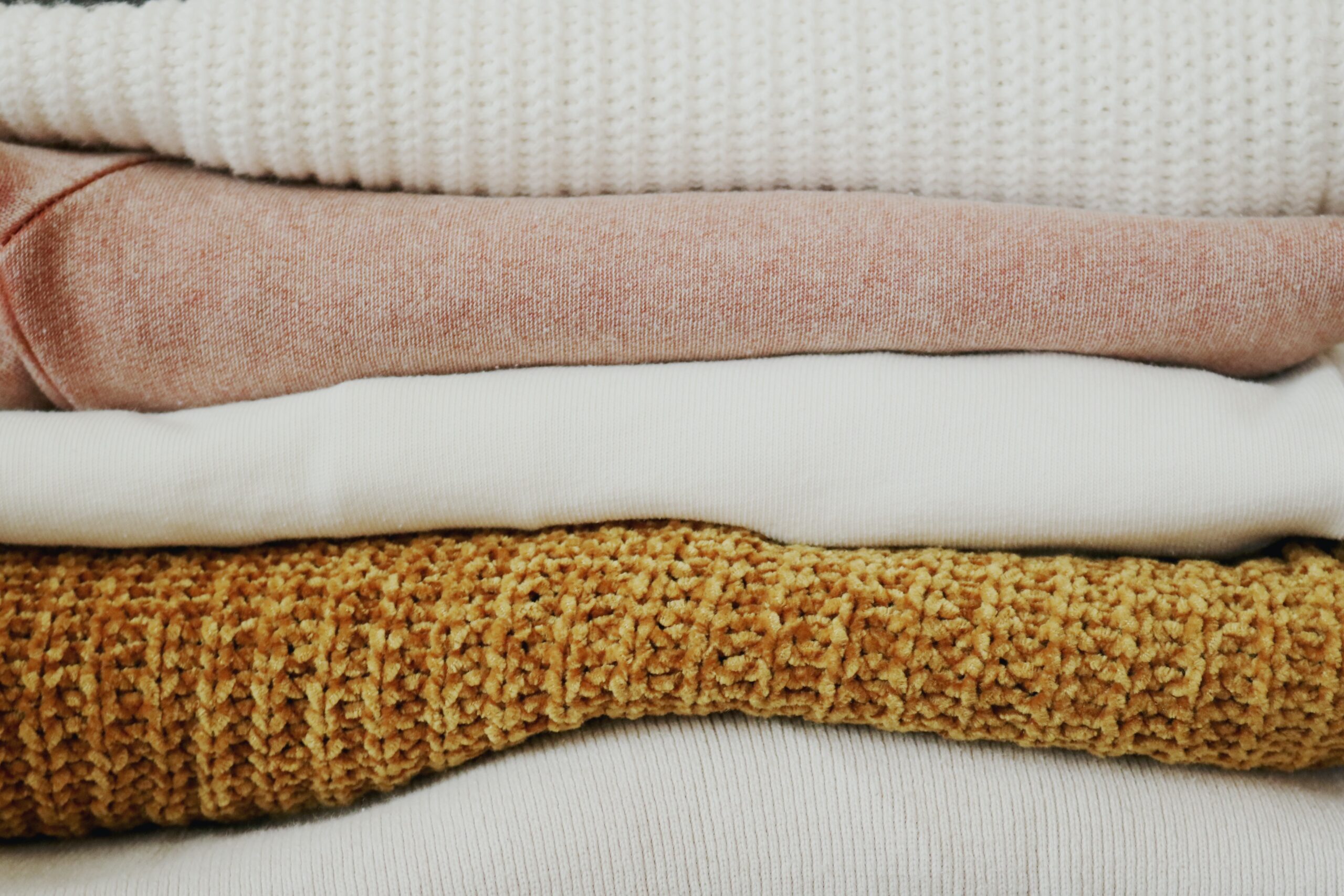Many enjoy sewing as a pastime. For others, it is a way to make clothes or repair other textile goods to lower household expenses. Whatever your motivation for starting to sew, you must have a fully-stocked sewing kit.
Where to begin with your sewing kit? Needles? Threads? There will be a whole array of essential things you should have in your beginner’s sewing kit, allowing you to complete your first craft or clothing project.
To help you get started, take a moment to list everything you will need to keep everything organized and ready for use. It will keep everything right at your fingertips, allowing you to concentrate on the sewing project you are working on rather than stressing about where you will get the supplies you need to complete it.
Chalk or fabric marker
Marking your fabric to show where to cut or draw your stitching lines is inevitable. You cannot use a regular pen, so it is a good idea to get some chalk or washable marker pens that will not ruin the fabric.
Remember, the chalk is better for transferring pattern markings, but it is only easy to handle on dark fabrics. A fabric marker, usually purple or blue, will be displayed on most cloth. They wash away with water and are generally more versatile than chalk because the lines do not disappear from accidental rubbing.
Tape measure
All sewers, not just those learning to sew, need a tape measure. One of the most important steps you can do to ensure the success of your project is to measure your fabric. Measure twice and cut once, as they say in the old saying. The last thing you want is to create a beautifully handmade garment, only to discover that it is either too small or too big.
You could purchase a set of plastic rulers, but these measuring tapes are considerably easier to handle and store and frequently extend to 6 feet or more. The flexible plastic measuring tape helps measure the lengths of fabric, the intended recipient of the item, and adjustments for changes in your project.
Seam Gauge
As a beginner, you should trust the ruler more than your judgment. A simple metal tool with a sliding plastic bit is called a seam gauge. It is straight, sturdy, and frequently has an adjustable notch, making it more reliable than ordinary measuring tape.
A primary use is to measure hem widths, buttonhole widths, and more. The center slider, which enables precise point marking, is the primary feature that distinguishes this from a typical ruler.
Seam Ripper
Even experienced clothing manufacturers and quilters make mistakes and turn to their handy seam rippers. This nifty tool is a must sewing for beginners essential.
If you have made a mistake in your stitching, simply unpick them away and do it. Restart and forget the whole thing ever happened.
It is nice to have various types of seam rippers. The rippers with the red ball help protect your fingers and your fabric. Other seam rippers will come with a point turner on the other end, which is also handy.
A good pair of fabric scissors
A good pair of scissors is a need for sewers of every fashion. Fabric scissors are extremely sharp and made to cut through all types of fabric. The first step in the project is to get a pair of fabric scissors.
For specialized sewing projects, fabric scissors with unique blades are available. There are also fabric scissors with blades angled downward so they lie flat on the cutting surface when you use them.
Embroidery scissors
Embroidery requires fine precision sewing, so an embroidery pair of scissors is necessary when it is tricky to reach ends to clean up. The distinctive long, pointed points enable you to cut threads in tight areas and still get a neat, fray-free cut.
Pinking scissors
Pinking scissors have saw-toothed blades rather than straight ones, allowing you to cut a stylish zig-zagged line, but they also have another practical function. Cutting the fabric will cause a lot of fraying if the fabric has unfinished edges. Pinking scissors cannot stop the cloth from fraying, but the zig-zag pattern limits the length of the frayed thread, resulting in a cleaner finish.
Needles
When assembling your sewing kit, you need a selection of sewing machine needles. Generally, you want a standard size and then something for denim or other thick fabrics. Always make sure that they are fit for your model or brand.
Your sewing box should also keep a small collection of hand-sewing needles. You will need these needles to complete small openings or other small details.
Needle threader
A needle threader is a little sewing tool used to assist in pulling a thread through the eye of a sewing needle. There are both hand and machine forms.
Did you know the first known use of needle threaders in Europe was in the eighteenth or early nineteenth century?
Thread
Building up a substantial thread collection is not very complicated and can even be a little enjoyable. You will need a thread that matches and another one to contrast with your project.
Start with the basics. Get a spool of thread that compliments or matches the project you are working on, then black and cream/white. You only require that to get started.
Remember that when it comes to thread, you always get what you pay for, so cheap ones will break and fray at the ends easily. When sewing for most kinds of garments, you should use an all-purpose thread made of 100% polyester. Check the label carefully since some threads, like rayon, silk, and quilting thread, are not to be used to make clothing.
Pins or Clips
Go with what works for you, may it be the time-tested pins and the new-age clips, or you can have a bit of both. Either way, you will need at least one of them in your sewing kit.
Pin Cushion or Magnet
Pincushions are a must, but if you can, find one with a magnetic strip. A magnet makes it easy to pick up dropped and lost pins in the carpet. In either case, a pincushion is the only way to store pins that almost ensure you do not get pricked.
Thimbles/Band-Aids
Use a thimble when hand sewing, and keep a pack of band-aids in your beginner’s sewing kit, just in case you might prick your finger.
Rotary cutter
The rotating circular blade of a rotary cutter makes cutting curves more precise. Using rotary cutters, you may quickly cut through multiple layers of fabric to separate pieces of the same size and shape.
They range from small to large and have different purposes. For instance, small rotary cutters are suited to cutting out small, intricate curves, while large ones are ideal for quickly cutting straight lines or more broad curves.
Cutting Mat
It is a big help to use a rotary cutter with a mat because it protects the surfaces from damage. It also has markings, angles, and measurements to help you accurately cut your fabric.
You can purchase a basic one that is great for beginning sewers, but it could be worth finding a decent one that lasts longer so you are not replacing mats every couple of years.
Variety of Great Fabric
If you did not have tons of great fabrics to work with, all of this would not be necessary. You personalize by having your distinctive patterns permanently printed with your unique designs. A selection of more than 100+ fabrics, including natural cotton, silks, velvets, and jerseys, provides you with complete creative freedom.
In conclusion, sewing kit essentials are an investment for any beginner seamstress or tailor. It contains all the tools you need to get started. It is essential to keep your sewing kit organized so you can find the items you need quickly.
Nevertheless, a well-organized sewing kit will also make it easier for you to create professional-looking seams.

